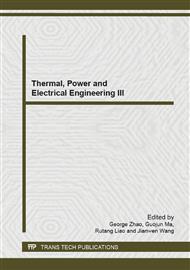p.234
p.240
p.245
p.249
p.254
p.258
p.262
p.270
p.274
Pore Network Simulation of Two Phase Flow Based on X-Ray Micro Computed Tomography Images
Abstract:
In this paper, firstly, the X-ray micro computed tomography (micro-CT) is used for the analysis of internal structure of sand-packed beds. Binary data which are able to describe the pore structures of these beds were obtained from a series of imaging processing of rescaling, media filtering, and thresholding. Then a Maximal Ball (MB) algorithm is applied to these binary data to extract the equivalent pore networks. The parameters of the pore networks, such as radius, coordination number and shape factors of pore and throat are computed. The results demonstrate that the MB method can extract reasonable and faithful pore network of the different sand packed samples. Finally, the relative permeability and capillary pressure of drainage and imbibition cycle of water and oil are predicated. The numerical simulation results demonstrated good accordance with that of the experiments. Pore network simulation shows good results for two phase flow in porous media.
Info:
Periodical:
Pages:
254-257
Citation:
Online since:
June 2014
Authors:
Price:
Сopyright:
© 2014 Trans Tech Publications Ltd. All Rights Reserved
Share:
Citation:


